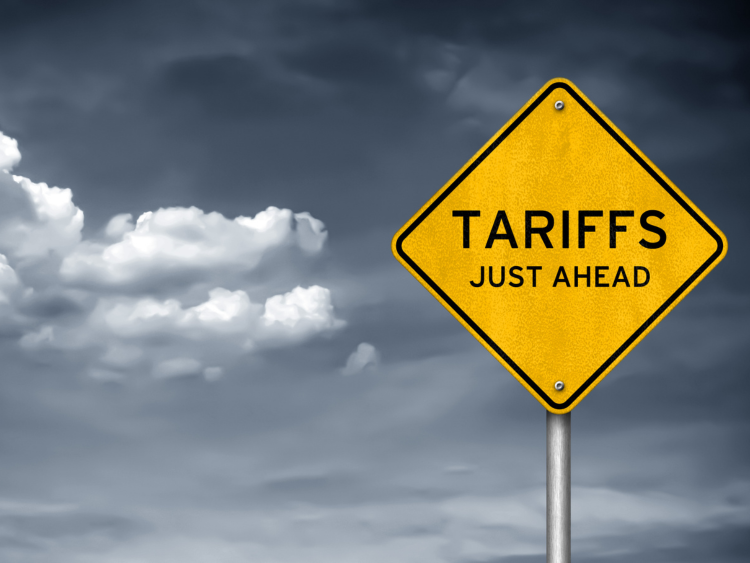Government/Policy

Commerce Seeks Input on Trade Deficit
Written by Sandy Williams
May 2, 2017
The Commerce Department is seeking input from American businesses on what factors contribute to the trade deficit.
Commerce is collecting information to submit to President Trump as an information base for renegotiating trade deals and to deter and punish trade abuse.
“Many trade abuses are well known to American companies, but because different Federal agencies track different abuses there is no single resource that provides a full picture,” said Secretary Ross. “I look forward to submitting a report to the President that provides the full picture as we work to swiftly reduce our trade deficit.”
An Executive Order signed on April 29 states that every U.S. trade and investment agreement “should enhance our economic growth, contribute favorably to our balance of trade, and strengthen the American manufacturing base.”
The executive orders the Commerce Department to conduct a comprehensive review of
a) All trade agreements to which the U.S. is a party,
b) All trade relations with countries governed by rules of the WTO which the U.S. does not have free trade agreements but where the U.S. has a significant trade deficit in goods.
President Trump equates a drop in GDP with trade deficits. The President said in a tweet on April 26: “The U.S. recorded its slowest economic growth in five years (2016). GDP is up only 1.6%. Trade deficits hurt the economy very badly.” Several of his advisers are of the same opinion.
Forbes contributor Tim Worstall says this is plain wrong. There is a correlation between growth and trade deficits, but a booming economy requires more imports to meet demand.
Worstall points to Politifact which said that 2001 and 2009 had relatively small trade deficits but were two of the three weakest years for GDP growth during that time period.
The equation to determine GDP is: Y = C+I+G+(X-M), explained as GDP equals consumption plus investment plus government spending plus the trade balance, which may be positive or negative (i.e., a trade deficit). Subtracting the trade deficit appears to bring down the GDP number but does not mean it is negatively impacting the economy. Worstall notes that imports are consumed, used in investments or bought by the government, thus already included into the GDP equation. They are subtracted from the GDP equation to avoid double counting.
If you look at the two charts of Trade Deficit next to the GDP, you can see the relationship between the two.
Monica de Bolle, a senior fellow at the Peterson Institute for International economics explained to Politico that a trade deficit is mainly a reflection of underlying patterns of savings and consumption in the economy.
When the U.S. economy is stimulated and doing well the currency becomes stronger. US exports become more expensive while imports become cheaper. The choice to buy more imports increases the trade deficit. On the other side of the coin, if the economy is operating below capacity, policies aimed at reducing the trade deficit would help increase domestic production and employment and stimulate the economy.
Currently the economy is in pretty good shape with oil and energy picking up, construction doing well, manufacturing indexes showing growth, and relatively low unemployment. Reducing the trade deficit, and imports, could put pressure on domestic production leading to higher prices for products and slowing the economy.
“The United States has had persistent trade deficits since the early 1980s,” de Bolle told Politico. “Between then and now, we’ve had recessions, and episodes of higher growth, all of them accompanied by trade/current account deficits. There is absolutely nothing to suggest that trade deficits led to weak GDP growth in 2016, based on historical data.”
SMU Note: Steel Market Update will have two panels on trade and trade issues during our 7th SMU Steel Summit Conference which will be held in Atlanta on August 28-30, 2017. On Monday, August 28th we will have a Pre-Summit workshop about the various trade suits and remedies (Section 232, Section 201, Section 337, AD/CVD, etc.). The presenters are trade attorney Lewis Leibowitz and Daniel Pearson former ITC Chairman, and Cato Institute Fellow. Details about the conference can be found on our website or you are welcome to contact our office at 800-432-3475 or 772-932-7538. The second panel will be on Tuesday and will have four speakers (Leibowitz & Pearson, Philip Bell of SMA and one other) to discuss what exactly is “free and fair trade?”

Sandy Williams
Read more from Sandy WilliamsLatest in Government/Policy

Price on Trade: The foolishness of free trade with controlled economies
It was only a matter of time before a shutdown happened. And, no, we aren’t talking about the federal government’s lapse in appropriations. On Oct. 9, Beijing announced a series of restrictions that will effectively shut down exports of rare earth elements, magnets, and certain downstream products vital to advanced manufacturing.

Trump pulls plug on trade talks with Canada after anti-tariff Reagan ad
US President Donald Trump took to social media late Thursday night to announce he was canceling trade talks with Canada.

Leibowitz: Renewed trade war with China over rare earths
On Oct.10, President Trump announced major increases in tariffs on Chinese goods. The trigger was a new regime of export controls on rare earth metals and products using those elements, including magnets, capital equipment, and catalysts for catalytic converters in cars and trucks.

Industry piles on new Section 232 steel derivative inclusion requests
The Department of Commerce received 97 submissions from producers, manufacturers, and groups seeking Section 232 tariff coverage for steel and aluminum derivative products.

Price on Trade: New EU steel tariffs don’t mean the US should weaken its stance
Any steel imports into the EU that exceed the new, lower quota level would be subject to a 50% tariff, which represents a major increase from the EU’s current 25% out-of-quota tariff. This move would largely align the EU’s steel tariff rate with Canada and the United States.

